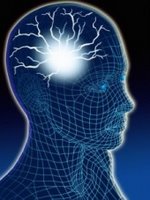Obsessive-Compulsive Disorder
 Obsessive-compulsive disorder (OCD) is characterized by disturbing thoughts or images, called obsessions, and rituals, called compulsions, that are performed to try to prevent or dispel them. The obsessive-compulsive does not take any pleasure from performing the rituals, but is forced to perform them by unbearable feelings of anxiety and unease. Performing the ritual gives the OCD sufferer temporary relief from the discomfort caused by the obsession.
Obsessive-compulsive disorder (OCD) is characterized by disturbing thoughts or images, called obsessions, and rituals, called compulsions, that are performed to try to prevent or dispel them. The obsessive-compulsive does not take any pleasure from performing the rituals, but is forced to perform them by unbearable feelings of anxiety and unease. Performing the ritual gives the OCD sufferer temporary relief from the discomfort caused by the obsession.
Some OCD sufferers are obsessed with germs or dirt, and wash their hands over and over. A journalist may be filled with doubt, and checks his facts repeatedly, even if it means going out of his way to find a telephone in a remote village. A child may refuse to leave the house without putting his or her toys in a particular place, or going around turning the lights on and off in a particular order.
A lot of healthy people might think that they have OCD, when they find themselves repeatedly checking the stove before leaving the house. The disorder is diagnosed, however, when such activities consume at least an hour a day and the sufferer experiences intense feelings of discomfort and unease if he or she resists performing the required ritual. In addition, the activities appear to be senseless, are very distressing, and interfere with daily life.
OCD affects men and women equally, and afflicts about 2% of the population. It can appear in childhood, adolescence, or adulthood, but on the average it first shows up in the teens or early adulthood. A third of adults with OCD experienced their first symptoms as children. The course of the disease is variable. In some sufferers, the symptoms come and go. In others they ease over time, or can grow worse. There is some evidence that OCD might run in families.
The OCD sufferer might also be depressed, and have other anxiety disorders. Some may avoid situations in which they might have to confront their obsessions, or they may try to use alcohol or drugs to escape their compulsion. Some OCD sufferers have been able to adapt to their condition, and even find that it may help them in a career. An obsessive journalist, for example, may harness his obsession to ensure that his articles are extremely accurate. However, severe OCD can keep someone from holding down a job or from carrying out normal responsibilities at home.
See also:
- What is Anxiety?
- What is Generalized Anxiety Disorder?
- What are Panic Attacks?
- What are Phobias?
- What is Post-Tramautic Stress Disorder?
Note: The above information is intended to supplement, not substitute for, the expertise and judgment of your physician, pharmacist, or other healthcare professional. It is not intended to diagnose a health condition, but it can be used as a guide to help you decide if you should seek professional treatment or to help you learn more about your condition once it has been diagnosed.


